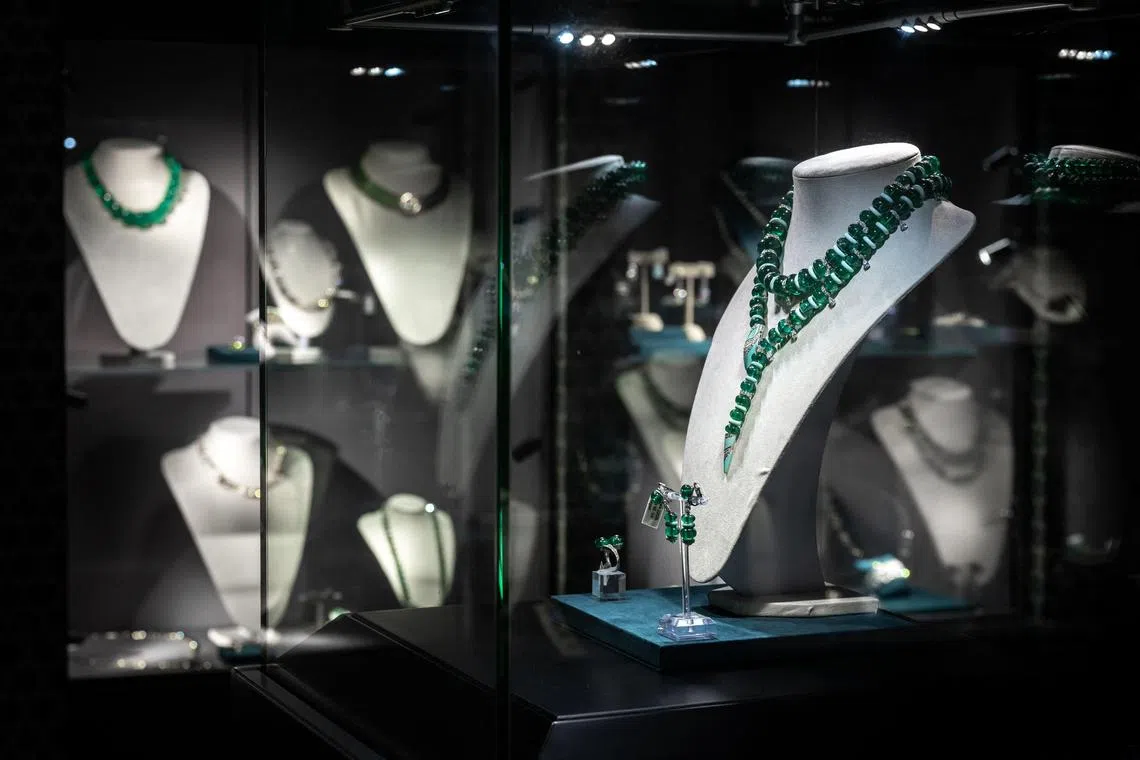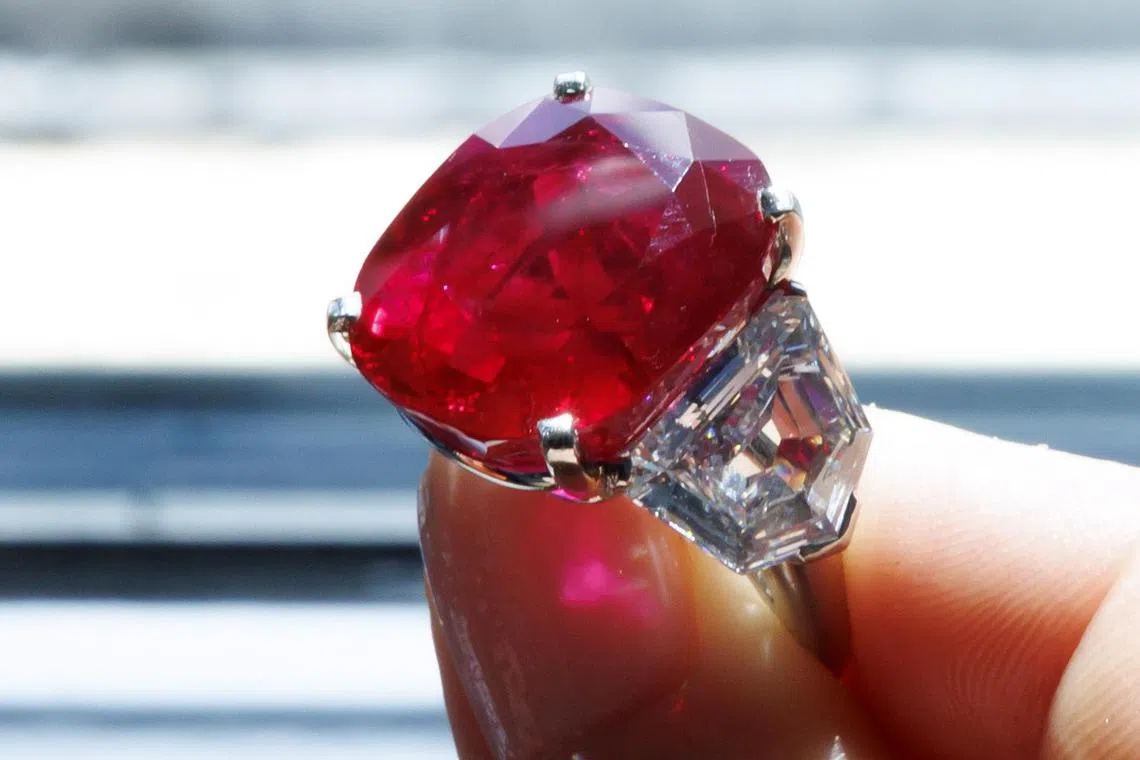Massive $270m jewellery auctions set world record in Geneva
Sign up now: Get ST's newsletters delivered to your inbox

The jewels belonged to an Austrian billionaire whose German husband made his fortune under the Nazis.
PHOTO: AFP
Follow topic:
GENEVA – Despite vigorous criticism about the Nazi-era origins of Mrs Heidi Horten’s wealth, an auction of the late Austrian billionaire’s jewellery
Spread over the course of two live auctions in Geneva last Wednesday and Friday and an online sale which ended on Monday, this treasure trove of necklaces, bracelets, earrings and tiaras carried an overall pre-sale estimate of US$163 million (S$218 million).
The first auction totalled 138 million Swiss francs (S$206 million), already setting a world record for a single-owner jewellery sale.
The second, which contained fewer big-ticket lots, brought in 37.8 million francs, while the online sale added an additional 3.8 million francs to the total.
The previous record was set in 2011, when a series of auctions of the late actress Elizabeth Taylor’s jewels made about US$137 million (S$183 million) at Christie’s.
Nazi history
Mrs Horten died in 2022 at the age of 81, shortly after opening an eponymous museum in Vienna.
She derived her wealth from her late husband, German entrepreneur Helmut Horton, who made his fortune in part by buying department stores at deeply discounted prices from Jews who sold under duress during the Third Reich.
“This auction is doubly indecent: The funds that made it possible to acquire these jewels are partly the result of the Aryanisation of Jewish property carried out by Nazi Germany,” Mr Yonathan Arfi, the chairman of Crif, or the Representative Council of French Jewish Institutions, wrote in a statement posted on the organisation’s website.
“In addition, this sale will contribute to a foundation whose mission it is to ensure the name of a former Nazi for posterity.”
Christie’s, for its part, acknowledges the origins of Mrs Horten’s wealth.
Christie’s EMEA president Anthea Peers said in a statement that all the objects up for auction were purchased beginning in the 1970s.
“All of the estate’s proceeds from the sale of this jewellery collection will be donated to a foundation that supports philanthropic causes, including medical research, children’s welfare, and access to the arts, pursuant to Mrs Horten’s wishes,” she said.
Additionally, Ms Peers’ statement continues: “Christie’s has also committed to donate a significant portion of our commission to organisations that contribute to vitally important Holocaust research and education.
“It will be up to these organisations, if they so wish, to communicate about these donations.”
Spectacular jewels
Much of the jewellery itself is spectacular.
About half of the lots on the sale’s first day sold for more than US$1 million each.
Standouts included a ring featuring a 17.43-carat emerald from Harry Winston, which carried a high estimate of 650,000 francs and sold for just under 1.8 million francs, as well as a Bulgari ring with a fancy intense pink emerald-cut 6.99-carat diamond, which sold for 9.1 million francs, double its high estimate of 4.5 million francs.
The second live auction included a striking Bulgari ring with a 35.72-carat sapphire, which went for 403,000 francs, well above its high estimate of 270,000 francs.
A substantial ruby and diamond necklace, showcasing rubies acquired from Cartier in the 1970s that were redesigned by Bulgari in 2000, soared above a 65,000 franc high estimate to sell for 277,200 francs.
Other pieces did not quite meet expectations.
A colossal Harry Winston diamond necklace featuring the 90.36-carat “Briolette of India” diamond – originally acquired by Cartier in 1909 – was estimated to sell for 9 million francs to 14 million francs but went for 6.3 million francs.
And a 25.59-carat ruby ring from Cartier sold for 13 million francs, just missing its low estimate of 14 million francs.

The 25.59-carat Sunrise Ruby and Diamond ring by Cartier.
PHOTO: EPA-EFE
Across the three auctions, 98 per cent of the lots were sold.
Winning bidders came from Europe and the Middle East (50 per cent), the Americas (28 per cent) and Asia (22 per cent). BLOOMBERG

